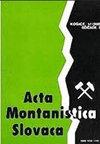复合碳化物增强高锰钢钻杆硬带材料的研制
IF 1.4
4区 地球科学
Q2 GEOSCIENCES, MULTIDISCIPLINARY
引用次数: 1
摘要
在本研究中,通过结合CALPHAD方法中的热力学建模和第一性原理计算,开发了基于复杂碳化物颗粒增强的高锰钢的新型“套管友好型”硬质合金。该合金通过药芯焊丝电弧焊沉积在钢基体上,具有复合结构,由具有加工硬化能力的锰奥氏体、多组分碳化物(Nb、Ti、Mo、V)的细小(高达5µm)夹杂物和奥氏体晶界处的C薄层(Mo,V)C组成。用市售的Fe-W-C和Fe-Cr-C系堆焊材料进行的对比磨损试验表明,所提出的合金具有防止钻套磨损的最佳性能组合,而其耐磨性以及在钢制沉头滑动摩擦条件下的耐磨性接近过共晶高铬合金。摩擦试验后对变形试样区域进行的显微硬度试验表明,当垂直远离摩擦接触区时,在约300µm的距离处,存在800-450 HV范围内的显著硬度梯度。在用显影合金沉积的层的微观观察过程中,沉积层和基体钢之间的界面没有裂纹,检测到孔隙分层,表明强烈的冶金结合。对钻杆接头进行了开发后磨损的铁基高铬合金加硬处理工艺,使钻杆能够以相同的耐用性重复使用。本文章由计算机程序翻译,如有差异,请以英文原文为准。
Development of a hardbanding material for drill pipes based on high-manganese steel reinforced with complex carbides
In the present study the new “casing-friendly” hardbanding alloy based on high-manganese steel reinforced with complex carbide particles was developed by combining thermodynamic modelling within the CALPHAD approach and first-principles calculations. The alloy, deposited by flux cored arc welding on a steel substrate, has a composite structure consisting of manganese-austenite with the ability to work hardening, fine (up to 5 µm) inclusions of the multicomponent carbide (Nb, Ti, Mo, V) and C the thin layers of (Mo,V)C at the austenite grain boundaries. The comparative wear tests carried out with commercially available hardfacing materials of the Fe-W-C and Fe-Cr-C systems showed that the proposed alloy has the best combination of properties preventing the wear of the drill casing, while its abrasion resistance as well as wear resistance in sliding friction conditions by steel counterbody is close to hypereutectic high chromium alloys. The microhardness tests performed on deformed specimen areas after the friction tests show the presence of a significant hardness gradient in the range of 800-450 HV at a distance of about 300 µm when moving perpendicularly away from the zone of friction contact. During the microscopic observation of the layer deposited with the developed alloy and the interfaces between the deposit and the base steel no cracks, pores delamination were detected indicating a strong metallurgical bonding. The hardbanding process was performed for drill pipe joints with the worn Fe-based high chromium alloy hardbanding after exploitation, which allows the drill pipe to be reused with the same durability.
求助全文
通过发布文献求助,成功后即可免费获取论文全文。
去求助
来源期刊

Acta Montanistica Slovaca
地学-地球科学综合
CiteScore
3.60
自引率
12.50%
发文量
60
审稿时长
30 weeks
期刊介绍:
Acta Montanistica Slovaca publishes high quality articles on basic and applied research in the following fields:
geology and geological survey;
mining;
Earth resources;
underground engineering and geotechnics;
mining mechanization, mining transport, deep hole drilling;
ecotechnology and mineralurgy;
process control, automation and applied informatics in raw materials extraction, utilization and processing;
other similar fields.
Acta Montanistica Slovaca is the only scientific journal of this kind in Central, Eastern and South Eastern Europe.
The submitted manuscripts should contribute significantly to the international literature, even if the focus can be regional. Manuscripts should cite the extant and relevant international literature, should clearly state what the wider contribution is (e.g. a novel discovery, application of a new technique or methodology, application of an existing methodology to a new problem), and should discuss the importance of the work in the international context.
 求助内容:
求助内容: 应助结果提醒方式:
应助结果提醒方式:


